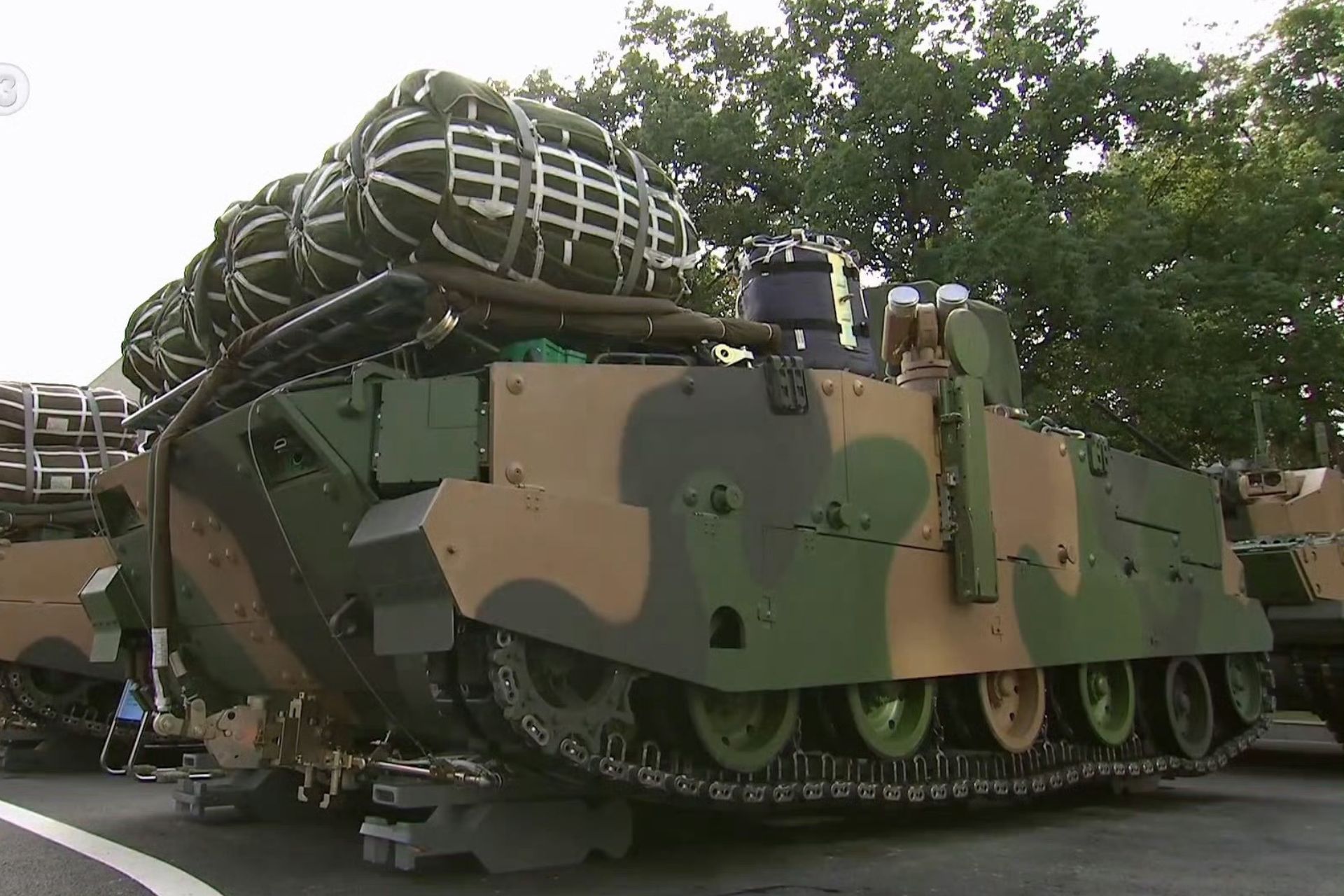Breaking News
China Enhances Airborne Forces with New Infantry Fighting Vehicles in Preparation for Potential Taiwan Scenarios.
China’s People's Liberation Army Air Force (PLAAF) Airborne Corps has recently begun deploying a new generation of air-droppable infantry fighting vehicles (IFVs), as revealed in a CCTV broadcast on 5 November 2024. These vehicles, developed by Norinco, replace the aging ZBD-03, which has been in service for over two decades, marking a significant step in modernizing China's military capabilities.

A screenshot from the CCTV video showcases the new armored vehicles of the PLAAF Airborne Corps (Picture source: CCTV)
The new IFVs are reportedly assigned to the 134th Combined Brigade of the Airborne Corps. Their design addresses operational shortcomings observed in recent conflicts, including Ukraine while leveraging advancements in mobility and armored protection. Equipped with redesigned hulls and featuring five road wheels on each side, these vehicles offer enhanced protection through applique armor and side skirts, while maintaining a lightweight configuration suitable for airborne deployment.
A notable feature of these vehicles is the integration of an active protection system, providing additional defense against modern threats such as anti-tank projectiles. This system places these vehicles on par with some of the most advanced armored platforms in China's arsenal, such as the Type 99A and VT-4 tanks. Their compatibility with large-capacity transport aircraft further demonstrates improvements in China's airborne deployment capabilities.
This modernization aligns with the PLA's broader effort to adapt its military assets to diverse operational environments and contemporary conflict demands. Enhanced protection and offensive capabilities not only strengthen the Airborne Corps' operational effectiveness but also expand its utility across a range of missions, from rapid response to protracted engagements.
The replacement of the ZBD-03 with this new generation of IFVs reflects a global trend among modern armed forces to prioritize active protection systems and strategic mobility. It also underscores China's defense industry's ability to meet evolving military requirements while positioning itself as a prominent player in the international defense sector.
Airborne troops hold a strategic role within the PLA, a focus emphasized by President Xi Jinping, who has called for rigorous training and combat readiness to establish a modern and powerful airborne force. Their effectiveness lies in their ability to deploy rapidly to diverse operational theaters, enabling swift intervention and control of key positions. They are particularly suited for missions requiring high mobility and immediate response, such as capturing airfields, conducting deep operations behind enemy lines, or providing disaster relief. This adaptability and rapid response capability make them a vital asset in achieving China's defense and security objectives.
In the context of a potential Taiwan contingency, airborne troops would be pivotal in the initial phases of an operation. Their rapid deployment could neutralize strategic Taiwanese defenses by seizing critical infrastructure such as airports, command centers, and key transportation routes. These actions would aim to disrupt Taiwan’s military coordination, paving the way for a larger amphibious or ground invasion. This approach would fit into a blitzkrieg-style strategy, leveraging the troops' mobility and ability to operate deep within enemy territory. However, such an operation would face significant challenges, including Taiwan's robust defensive preparations, the island’s challenging terrain, and the risk of international intervention, particularly from the United States. Despite these risks, the ability of China's airborne forces to project military power remains central to potential scenarios involving Taiwan.


























